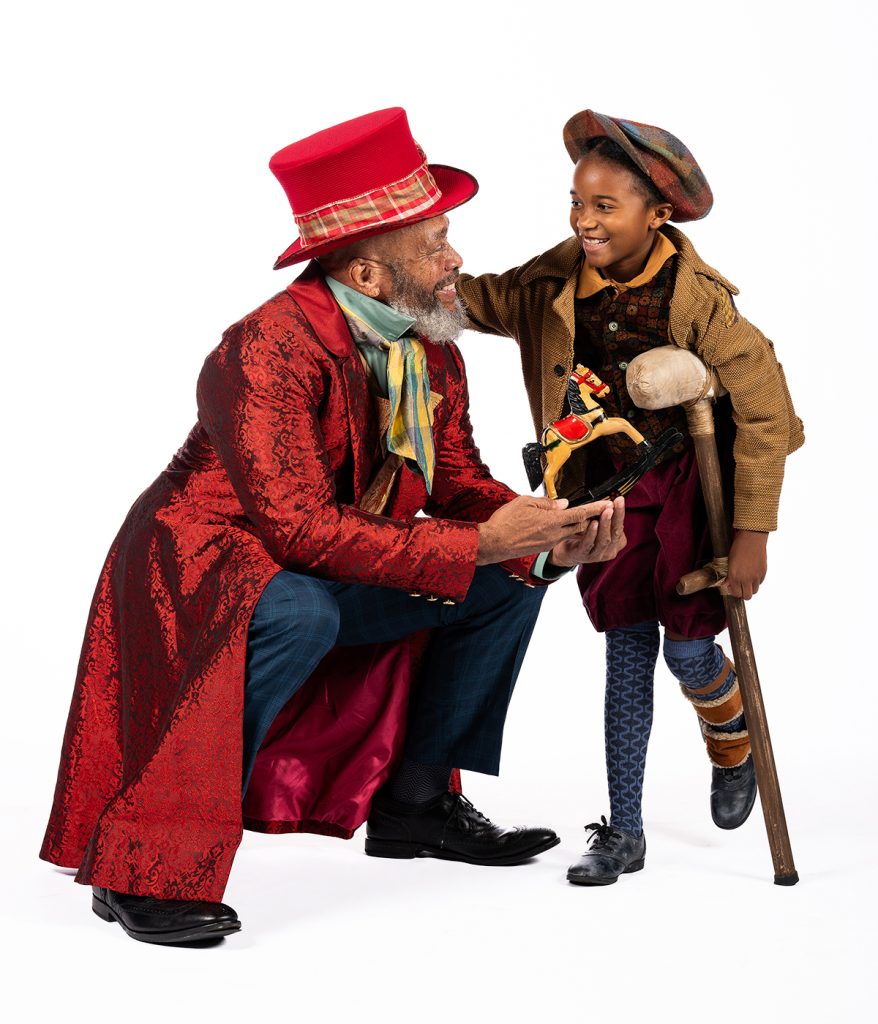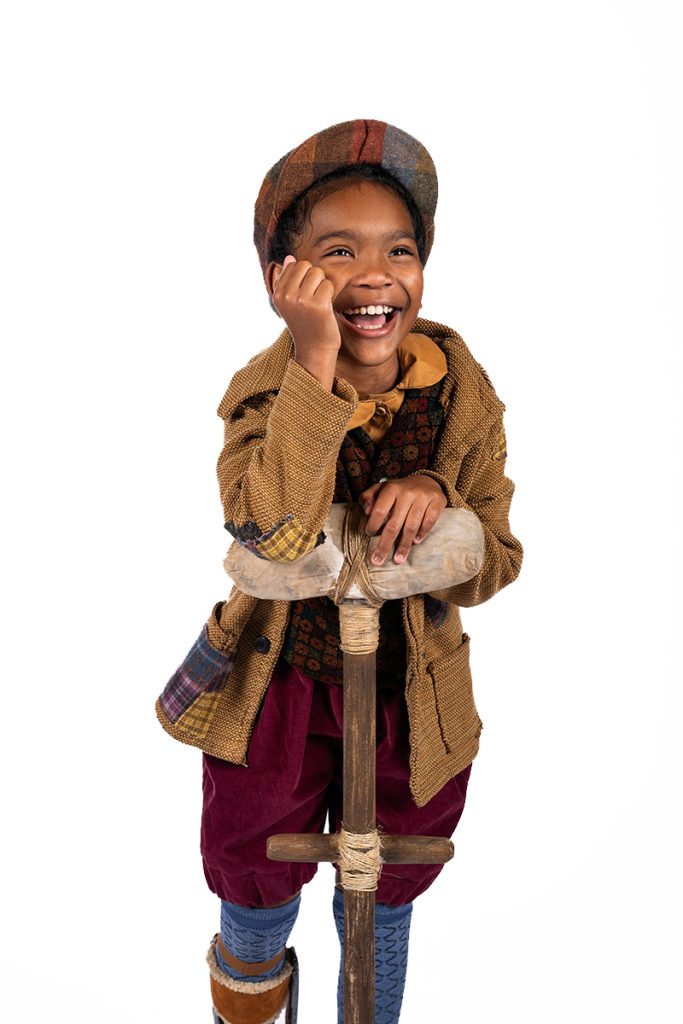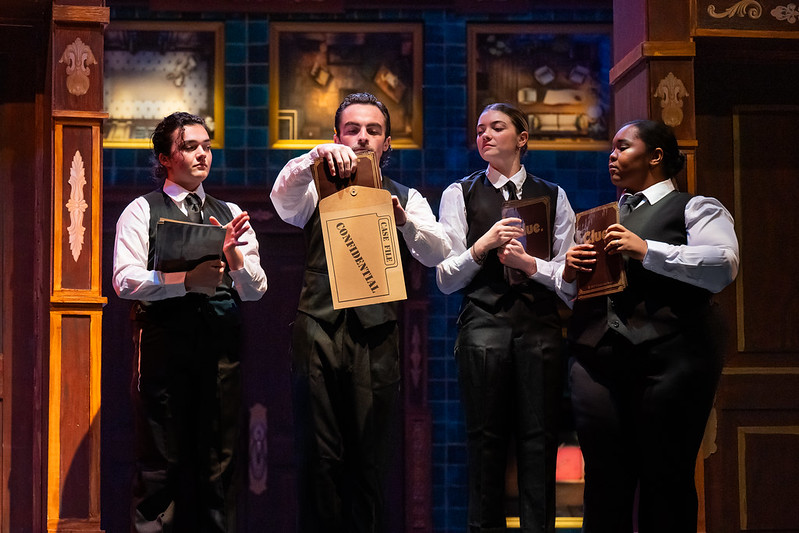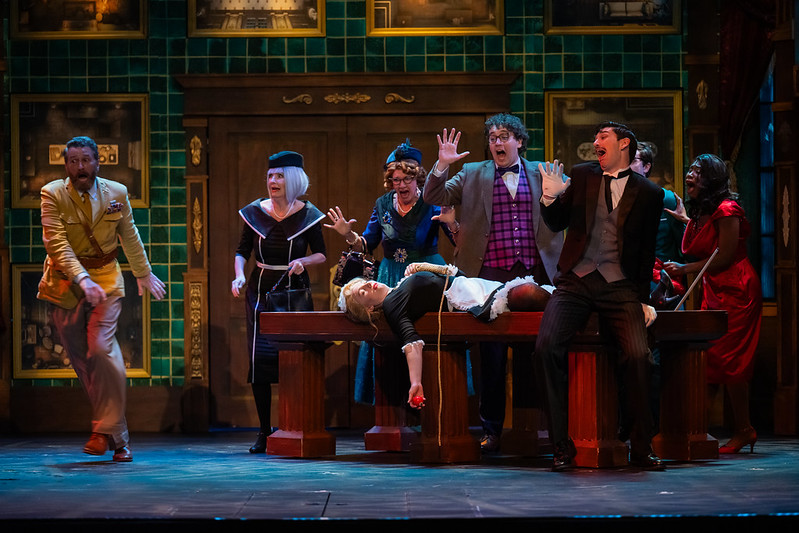We recently had the pleasure of interviewing Sam Henderson, our Music Director and Director of A CHRISTMAS CAROL. Read more below to discover insights into his creative process while directing this holiday classic!
1) What drew you to A CHRISTMAS CAROL as a project, and how do you connect with the themes of the story on a personal or creative level?
A CHRISTMAS CAROL has been a favorite story of mine since my second grade teacher, Mrs. Eisenhower, read it aloud to us in the time leading up to holiday break. I was enthralled by the magic and the imagery in the piece from the very start.

2) Music plays a crucial role in setting the tone for a production. Can you share the musical inspirations that guided your composition for A CHRISTMAS CAROL, and how you approached integrating them into the narrative?
Putting a modern spin on the music was a challenge for sure. It was important to me that we keep the instrumentation appropriate for the period; using only instruments that would have existed/been popular during Dickens’ time (mostly anyways!). I then had to figure out how to use those instruments in a way that sounded more modern and fun. Artists like Mumford and Sons and Lindsey Stirling and musicals like “Once” all came into play when searching for inspiration for this new take on these tunes. I also wanted some contrast back to reality of the time period. So, for example, when we’re in Fred’s house and the house guests break into song for the evening’s entertainment, the setting I did of “I Saw Three Ships” is very much of the period and doesn’t try to be something it’s not.
3) Collaborating with different creative minds is essential. How did you work with the choreographer and other members of the production team to ensure a cohesive and immersive experience for the audience?
Creating this new version of A CHRISTMAS CAROL alongside playwright Julian Wiles and, choreographer K’nique Eichelberger, was great fun. We were able to all be there in the room together trying things out and figuring out what worked and what didn’t. We could then make adjustments to music, choreography or script as needed to make all these elements work together to tell the story in the best way.

4) In directing A CHRISTMAS CAROL, do you have any favorite scenes or moments that stand out to you?
There are two scenes that I’m quite fond of. The first is in “the past” when we see the moment when Scrooge’s relationship with Belle ended. It’s a hard look at one of the reasons he has become the way he is in the present and has some really lovely writing. The other is in “the present” when Scrooge visits the Cratchits on Christmas Eve. Our Cratchits this year have such a warmth and joy about them that you find yourself really wrapped up in this scene and wanting to be a part of the family!
5) What do you hope audiences will take away from your production of A CHRISTMAS CAROL?
I hope audiences are able to see that people are able to move beyond the traumas and tragedies of their past, and that it’s never too late to rearrange your thinking and correct mistakes of the past. And sometimes, it’s the joy we are surrounded by at this time of year that can spark that little change.

Get your tickets to see A CHRISTMAS CAROL, running December 1st – December 22nd, at CharlestonStage.com.

Sam Henderson is Charleston Stage’s Resident Music Director and Director of Music Education. He holds a Bachelor of Music Education Degree in Instrumental Music/Trumpet Performance from Baylor University in Waco, TX, as well as a Masters Degree in Musical Theatre/Opera Music Direction from Arizona State University. Sam has over 20 years experience teaching music professionally, and has been working as a theatre music director and conductor since 2005. Professionally, Sam has worked for The Phoenix Theatre Company, Childsplay, The Broadway Palm West Dinner Theatre, Arizona Broadway Theatre, Lyric Opera Theatre and Copperstar Repertory Company prior to coming to Charleston Stage.





